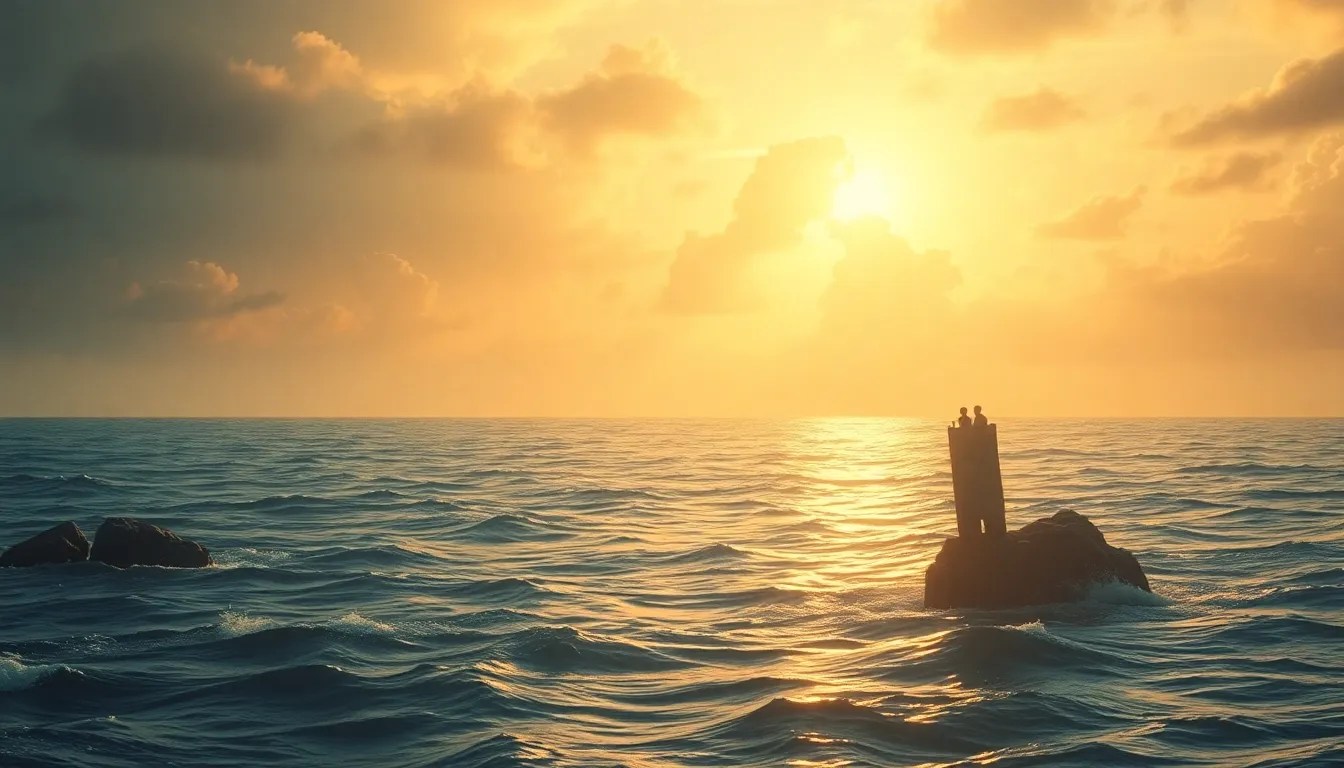The Ocean’s Map: How Polynesian Myths Charted the Waters
I. Introduction
Polynesian navigation is a remarkable testament to human ingenuity, showcasing how ancient seafarers traversed vast oceanic expanses with remarkable precision. This intricate system of navigation, deeply intertwined with the natural world, is not merely a technical skill but a rich cultural practice steeped in mythology. Myths play a crucial role in understanding the oceanic routes, as they encapsulate the knowledge and experiences of generations of navigators.
The purpose of this article is to explore the profound connections between Polynesian mythology and navigation, illustrating how these ancient stories have charted the waters of the Pacific and continue to influence modern practices.
II. The Importance of the Ocean in Polynesian Culture
The ocean is central to Polynesian culture, serving as a vital source of sustenance and a means of livelihood. Here are some key aspects of its significance:
- Source of Sustenance: The ocean provides fish, shellfish, and other marine resources that are fundamental to the diet and economy of Polynesian communities.
- Spiritual Significance: In Polynesian belief systems, the ocean is often viewed as a living entity, embodying various deities and spiritual forces that shape the natural world.
- Cultural Practices: Many cultural rituals, ceremonies, and festivals are tied to the sea, reflecting its importance in daily life and community identity.
III. Key Figures in Polynesian Mythology Related to the Ocean
Polynesian mythology features a pantheon of deities and legendary figures associated with the ocean. Some of the most notable include:
- Tangaroa: The god of the sea, Tangaroa is one of the principal deities in Polynesian culture, overseeing all marine life and the ocean’s vastness.
- Maui: A demigod known for his cunning and bravery, Maui’s adventures often involve the ocean, such as fishing up islands and controlling the winds.
- Other Deities: Numerous other gods and goddesses, such as Kanaloa (Hawaiian god of the ocean) and Hina (associated with the moon and tides), have crucial roles in navigation and the maritime environment.
IV. Mythological Stories as Navigational Tools
Polynesian myths are rich with stories that encode geographical knowledge, serving as navigational tools for voyagers. These narratives often incorporate elements such as:
- Stars: Celestial navigation is a cornerstone of Polynesian wayfinding, with stories guiding navigators to use specific star formations as directional cues.
- Winds and Ocean Currents: Myths often describe the behavior of winds and currents, teaching navigators how to harness these natural forces for safe passage.
- Specific Myths: For example, the story of Maui slowing the sun also serves as a metaphor for understanding the movement of celestial bodies, crucial for navigation.
V. The Concept of “Wayfinding” in Polynesian Navigation
Wayfinding is an ancient Polynesian practice that combines observation and intuition to navigate vast ocean spaces without modern instruments. It encompasses:
- Definition: Wayfinding involves using natural signs, such as the position of stars, the behavior of animals, and the shapes of waves, to determine one’s location and direction.
- Integration of Myth: Myths are interwoven with practical navigation techniques, providing a narrative framework that helps navigators remember essential skills and knowledge.
- Training: The education of navigators is conducted through oral traditions, with elders passing down knowledge and stories to the next generation of voyagers.
VI. The Role of Nature in Polynesian Myths and Navigation
Nature plays a vital role in Polynesian myths and navigation practices. Key elements include:
- Animal Behavior: Certain animals, such as birds and fish, are observed for signs of land or changes in weather, providing crucial information for navigators.
- Natural Phenomena: Sea swells, tides, and celestial bodies are integral to navigation, with myths often explaining their significance and how they can be interpreted.
- Mythological Narratives: Many myths incorporate these natural elements, illustrating the interconnectedness of the environment and cultural identity.
VII. Modern Interpretations and Revivals of Polynesian Navigation
In recent years, there has been a resurgence of interest in traditional Polynesian navigation methods. This revival highlights:
- Contemporary Significance: Ancient navigational techniques are being recognized for their sophistication and relevance to modern sailing and environmental awareness.
- Cultural Resurgence: Communities are working to teach and preserve traditional navigation practices, often through cultural festivals and educational programs.
- Impact of Technology: While technology has transformed navigation, there is a growing appreciation for the wisdom of traditional methods and their application in contemporary contexts.
VIII. Conclusion
The relationship between Polynesian mythology and navigation is profound and enduring. Myths have not only served as spiritual and cultural touchstones but have also provided practical guidance for navigating the vast Pacific Ocean. As we explore the legacy of these ancient stories, we gain a deeper appreciation for the intricate ways in which culture, nature, and navigation are woven together in Polynesian society.
We invite readers to delve into the rich tapestry of Polynesian culture, exploring its myths and the invaluable knowledge they offer about the natural world and human connection to the sea.



